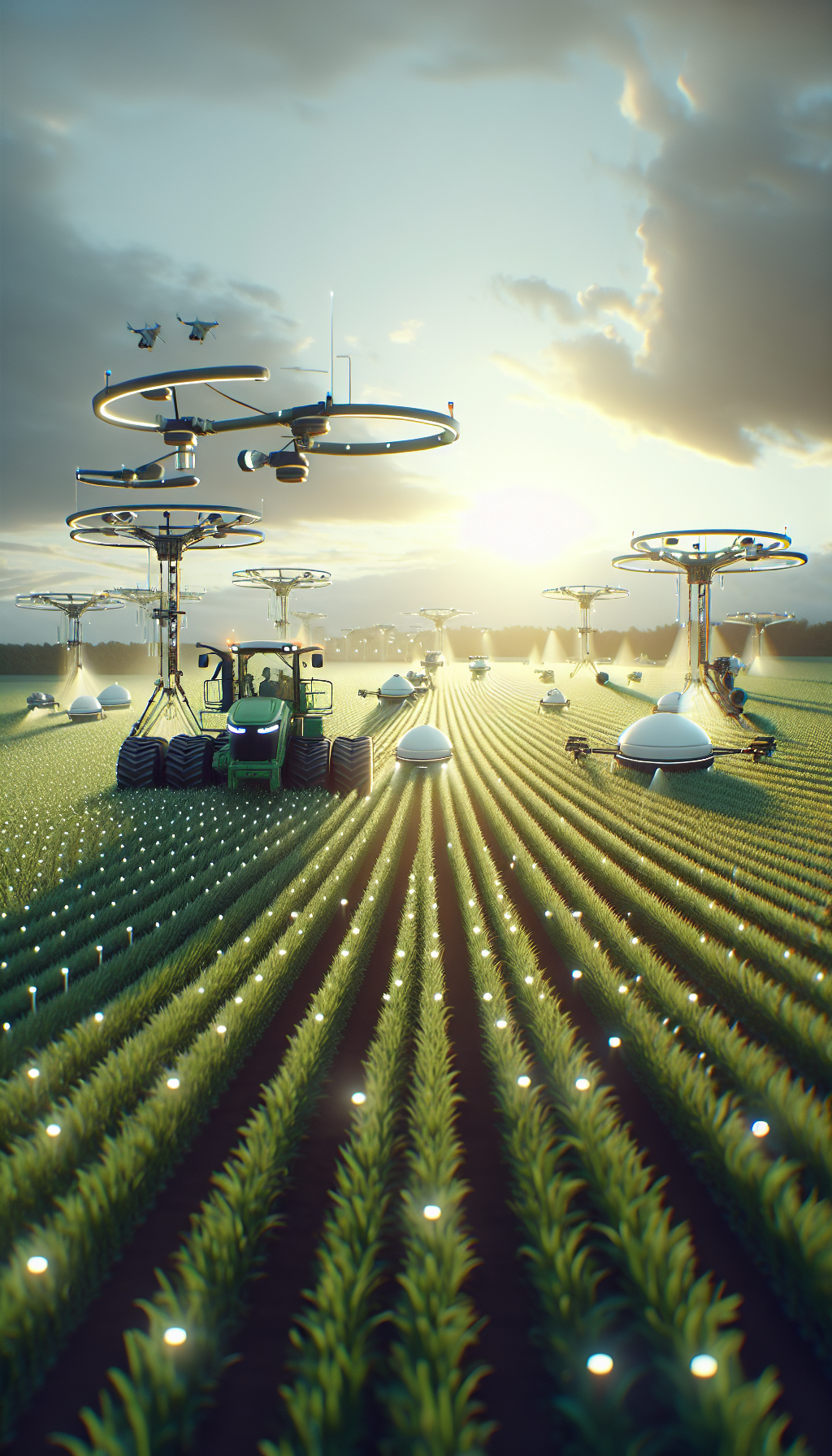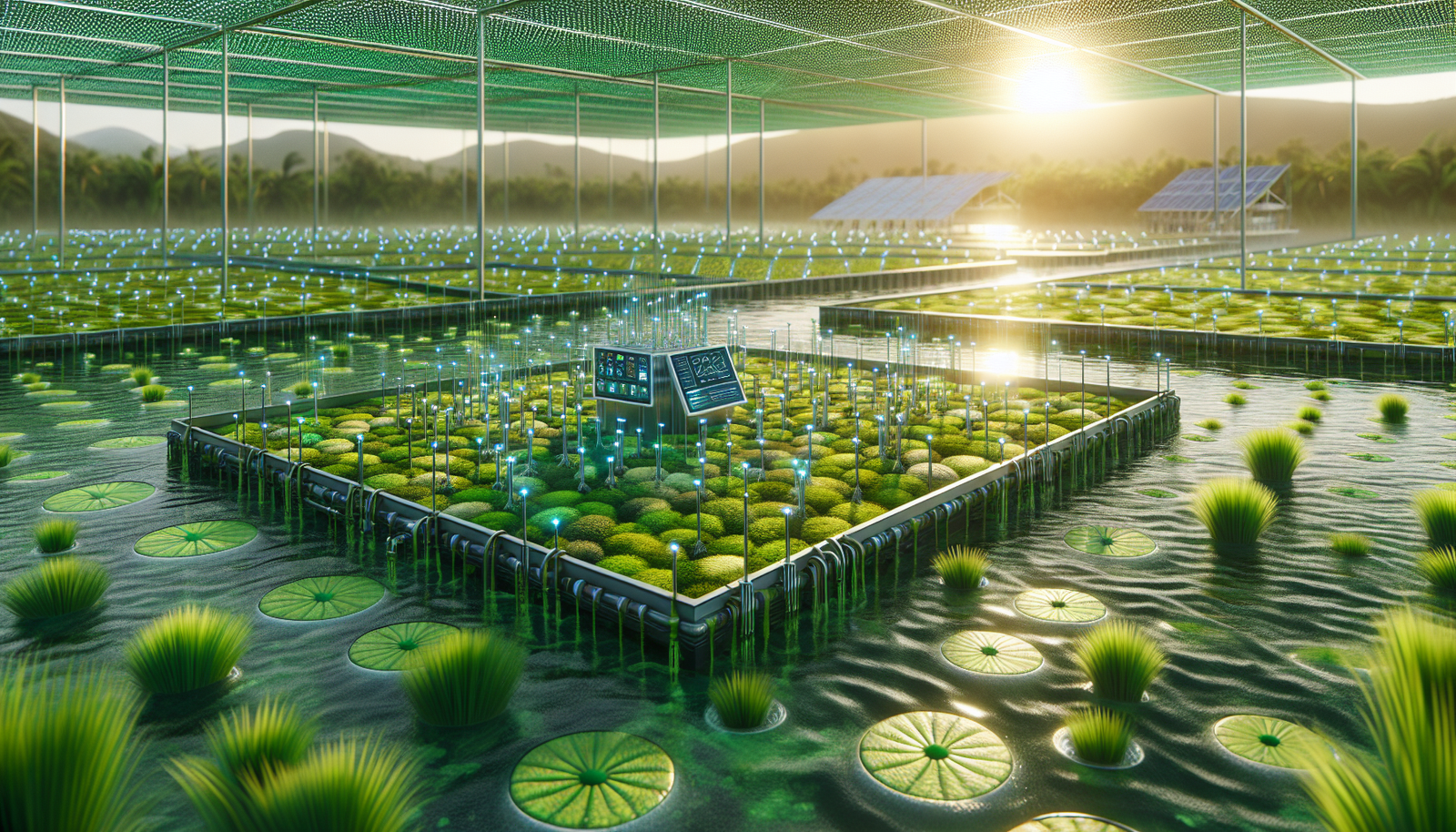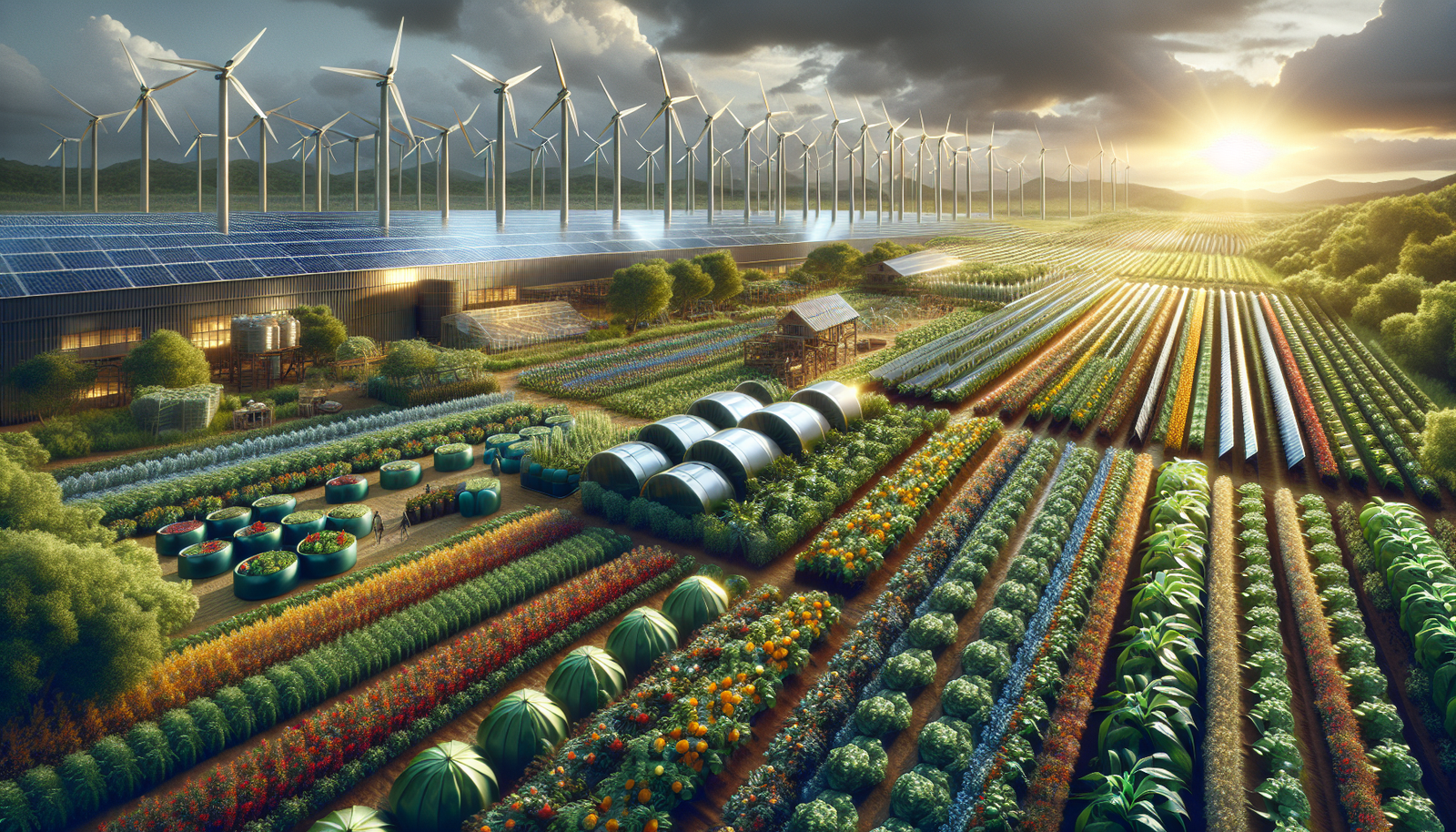The Rise of AI in Agriculture
In recent years, the agricultural sector has witnessed a significant transformation with the rise of Artificial Intelligence (AI). This technological advancement is not just an incremental change but a revolutionary shift that is reshaping the way farming is conducted. AI applications in agriculture are diverse and range from predictive analytics for weather forecasting to automated machinery that performs tasks with precision and efficiency. The integration of AI in agriculture has led to improved decision-making processes and enhanced operational efficiencies, contributing to the sustainability of agricultural practices.
AI’s Impact on Crop Management
AI technologies have a profound impact on crop management practices. Through the use of AI-driven tools, farmers can now monitor crop health in real-time, identify pest infestations early, and optimize irrigation practices. These advancements are made possible by machine learning algorithms that analyze vast amounts of data collected from sensors placed throughout the fields. As a result, farmers can make informed decisions that lead to increased crop yields and reduced environmental impact. The implementation of AI in crop management not only boosts productivity but also enhances the resilience of crops to changing climatic conditions.
Moreover, AI facilitates precision agriculture, which involves the precise application of inputs such as water, fertilizers, and pesticides. This targeted approach minimizes waste and maximizes the effectiveness of resources, leading to sustainable farming practices. The following table provides a comparison between traditional farming methods and AI-powered precision farming:
| Aspect | Traditional Farming | AI-Powered Precision Farming |
|---|---|---|
| Resource Utilization | High Waste | Optimized Usage |
| Environmental Impact | Significant | Reduced |
| Crop Yield | Variable | Consistent |
As AI continues to evolve, its applications in agriculture are expected to expand further, offering innovative solutions to some of the most pressing challenges faced by the industry today. This technological evolution not only promises to enhance productivity but also aligns with global sustainability goals, paving the way for a new era of sustainable agriculture.
Precision Farming Techniques
Precision farming employs a variety of advanced techniques to enhance agricultural productivity while ensuring environmental sustainability. One such technique is Variable Rate Technology (VRT), which allows farmers to apply inputs such as fertilizers and pesticides at varying rates across a field. This method ensures that crops receive the right amount of nutrients and protection needed, minimizing waste and reducing environmental impact. By using VRT, farmers can significantly cut down on input costs and improve yield quality.
Another critical component of precision farming is the use of Geographic Information Systems (GIS) and Global Positioning Systems (GPS). These technologies enable farmers to map and analyze soil conditions, crop health, and field topography with high precision. The data gathered through GIS and GPS can be visualized through detailed maps, helping farmers make informed decisions about planting, irrigation, and harvesting strategies. Implementing these techniques leads to more efficient land use and conservation of water resources.
Furthermore, Remote Sensing Technology is increasingly being used in precision farming to monitor crop growth and detect potential issues such as pest infestations or water stress early. This technology involves the use of drones or satellites equipped with sensors to capture images and data from fields. The information collected is then processed and analyzed to provide actionable insights, which can be visualized in easy-to-read charts and graphs. These visualizations allow farmers to quickly assess the health of their crops and take necessary actions to mitigate any problems.
Lastly, precision farming incorporates Data Analytics and Machine Learning to predict and optimize farming operations. By analyzing historical and real-time data, machine learning algorithms can forecast weather patterns, predict crop yields, and recommend the best times for planting and harvesting. The use of data analytics is often displayed in tables that outline expected outcomes and resource usage, helping farmers plan their activities more effectively and sustainably.
| Technique | Benefits | Data Visualization |
|---|---|---|
| Variable Rate Technology (VRT) | Reduces input costs, minimizes waste | Input application maps |
| GIS and GPS | Efficient land use, water conservation | Field condition maps |
| Remote Sensing | Early problem detection, improved crop health | Crop health charts and graphs |
| Data Analytics and Machine Learning | Optimized operations, yield prediction | Forecast tables |
Data-Driven Crop Management
Data-driven crop management is at the heart of AI-powered precision farming, offering significant advancements in how farmers approach agriculture. By leveraging vast amounts of data collected from various sources such as sensors, drones, and satellites, farmers can make informed decisions that enhance crop yield and sustainability. This approach allows for the precise monitoring of soil conditions, weather patterns, and crop health, enabling farmers to optimize resource usage efficiently.
One of the primary benefits of data-driven crop management is the ability to reduce resource wastage. Through the use of AI algorithms, farmers can analyze data to determine the exact amount of water, fertilizers, and pesticides needed for each section of their fields. This targeted approach not only conserves precious resources but also minimizes the environmental impact of farming practices.
Moreover, data-driven insights help in predictive analytics and risk management. By analyzing historical data and current trends, AI systems can forecast potential threats such as pest infestations or disease outbreaks. This proactive strategy allows farmers to implement preventative measures well in advance, safeguarding their crops and ensuring food security.
The integration of data in crop management also facilitates real-time monitoring and adjustments. Farmers can receive instant updates on their mobile devices, enabling them to respond swiftly to changing conditions. This flexibility is crucial in maintaining the resilience of agricultural systems against the unpredictable challenges posed by climate change.
Sustainability Through Resource Efficiency
AI-powered precision farming is ushering in a new era of sustainable agriculture by significantly improving resource efficiency. By utilizing advanced algorithms and data analytics, farmers can optimize the use of water, fertilizers, and pesticides. This not only reduces waste but also minimizes the environmental impact of farming activities. For instance, AI systems can analyze weather patterns and soil conditions to determine the precise amount of water required, thus preventing both over-irrigation and water scarcity.
The efficiency gains from AI in farming are evident in the way it manages resources. Through the use of sensors and IoT devices, AI systems can continuously monitor crop health and soil quality. This real-time data collection allows for immediate adjustments in resource application. Below is a table illustrating the percentage reduction in resource use achieved through AI technologies:
| Resource | Traditional Farming (%) | AI-Powered Farming (%) |
|---|---|---|
| Water Usage | 100 | 70 |
| Fertilizer Usage | 100 | 65 |
| Pesticide Usage | 100 | 60 |
Furthermore, AI’s ability to predict potential pest infestations and crop diseases before they occur allows for targeted interventions, reducing the need for blanket pesticide application. This targeted approach is not only more sustainable but also cost-effective, as farmers can achieve higher yields with fewer inputs. An ol list below outlines the key benefits of AI-driven resource efficiency:
- Reduction in environmental pollution.
- Lower operational costs for farmers.
- Enhanced crop yield and quality.
- Increased resilience to climate change impacts.
In conclusion, AI-powered precision farming represents a promising pathway toward sustainable agriculture by optimizing resource use and minimizing environmental impact. As technology continues to evolve, its role in enhancing the resilience and sustainability of agricultural practices will only become more significant.
AI and Soil Health Monitoring
AI technology has significantly advanced the field of soil health monitoring, providing farmers with the tools they need to maintain and improve soil quality efficiently. By utilizing machine learning algorithms and data analytics, AI systems can analyze soil samples and provide insights into soil composition, nutrient levels, and moisture content. This information is crucial for farmers aiming to implement sustainable farming practices that enhance soil health over time.
One of the key advantages of AI in soil health monitoring is its ability to process large volumes of data collected from various sources, such as satellite imagery, drones, and IoT sensors. These technologies work together to create a comprehensive picture of soil conditions across different fields. As a result, farmers can make informed decisions about which areas require more attention, such as fertilization or irrigation adjustments.
| Benefits of AI in Soil Monitoring |
|---|
|
Furthermore, AI-powered soil health monitoring systems can predict potential challenges before they become critical. For instance, by analyzing trends in soil data over time, AI can alert farmers to early signs of degradation or nutrient depletion, allowing for timely intervention. This proactive approach not only safeguards the soil but also contributes to long-term agricultural sustainability, ensuring that farming practices can support future generations.
Weather Prediction and Climate Resilience
Weather prediction plays a crucial role in AI-powered precision farming, allowing farmers to make informed decisions based on accurate data. By utilizing advanced algorithms and machine learning techniques, AI systems can analyze vast amounts of meteorological data to forecast weather patterns with remarkable precision. This capability enables farmers to optimize planting schedules, irrigation systems, and harvest times, ultimately enhancing crop yield and quality.
Climate resilience is another significant benefit of integrating AI into precision farming. As climate change continues to pose challenges to agricultural practices, the ability to adapt and respond effectively becomes increasingly important. AI technologies help farmers anticipate extreme weather events, such as droughts or floods, and implement proactive measures to mitigate their impact. This not only safeguards crops but also contributes to the long-term sustainability of farming operations.
- Enhanced decision-making based on accurate weather forecasts
- Improved crop management through predictive analytics
- Increased ability to adapt to climate variability
To illustrate the impact of AI in weather prediction and climate resilience, consider the following hypothetical data:
| Year | Weather Prediction Accuracy (%) | Crop Yield Increase (%) | Reduction in Weather-Related Losses (%) |
|---|---|---|---|
| 2020 | 70 | 10 | 15 |
| 2021 | 75 | 12 | 20 |
| 2022 | 80 | 15 | 25 |
The data in the table highlights a trend of increasing accuracy in weather predictions, which correlates with improvements in crop yield and a reduction in losses due to adverse weather conditions. These advancements underscore the transformative potential of AI-driven solutions in fostering a more resilient and sustainable agricultural sector.
Pest and Disease Control
AI-powered precision farming plays a crucial role in revolutionizing pest and disease control, offering solutions that are both sustainable and highly effective. By leveraging advanced technologies, farmers can now detect and manage pest outbreaks with unprecedented accuracy. This not only reduces the reliance on chemical pesticides but also promotes a healthier ecosystem. Machine learning algorithms analyze vast amounts of data from various sources such as satellite imagery, drones, and sensors placed in fields to identify potential threats early.
One of the key advantages of using AI in pest and disease control is its predictive capabilities. AI systems can forecast pest movements and disease outbreaks by analyzing weather patterns, crop health data, and historical records. This allows farmers to implement targeted interventions, minimizing crop damage and yield loss. For instance, AI models can predict the likelihood of a pest infestation and recommend the optimal time for intervention, ensuring that resources are used efficiently.
The adoption of AI technologies in pest and disease control also enables the development of integrated pest management (IPM) strategies. These strategies are designed to manage pests in an environmentally sustainable way. AI can help in creating a balanced ecosystem by identifying beneficial insects that can act as natural predators to pests, thus reducing the need for chemical interventions. Moreover, AI systems can continuously monitor crop health and provide real-time feedback to farmers, allowing for adaptive management practices.
| AI Feature | Benefit |
|---|---|
| Predictive Analysis | Forecasts pest and disease outbreaks |
| Real-Time Monitoring | Enables immediate response to threats |
| Data Integration | Combines various data sources for comprehensive analysis |
| Resource Optimization | Reduces chemical usage and promotes sustainability |
In conclusion, AI-powered precision farming is transforming the way pest and disease control is conducted in agriculture. Its ability to provide precise, data-driven insights not only enhances the sustainability of farming practices but also ensures food security in the face of climate change and growing global populations. As these technologies continue to evolve, they hold the promise of further advancing sustainable agriculture and environmental conservation.
Water Management Innovations
AI-powered precision farming introduces groundbreaking water management innovations that significantly enhance the sustainability of agricultural practices. By leveraging advanced algorithms and real-time data analysis, farmers can precisely monitor and manage their water usage, ensuring that crops receive the optimal amount of water necessary for growth without wastage. This not only conserves valuable water resources but also reduces the cost of irrigation for farmers, leading to more sustainable farming operations.
One of the key features of AI in water management is its ability to integrate data from various sources such as weather forecasts, soil moisture sensors, and historical crop water requirements. This integration allows for the creation of detailed irrigation schedules that are tailored to the specific needs of each crop and field. The result is a dynamic irrigation system that adapts to changing conditions, ultimately leading to more efficient water use. The following table illustrates the impact of AI on water usage efficiency:
| Parameter | Traditional Farming | AI-Powered Farming |
|---|---|---|
| Water Usage (liters per hectare) | 10,000 | 6,500 |
| Crop Yield (tons per hectare) | 4.5 | 5.2 |
Furthermore, AI technologies enable the detection of leaks and inefficiencies within irrigation systems, allowing for timely repairs and adjustments. This proactive approach not only prevents water loss but also ensures that crops are not subjected to water stress, which can impact their growth and yield. Farmers are empowered with insights that help them make informed decisions, ultimately fostering a more resilient and sustainable agricultural ecosystem.
- Real-time soil moisture monitoring
- Customized irrigation schedules
- Leak detection and system optimization
As climate change continues to affect water availability, these AI-driven innovations in water management become increasingly crucial. By adopting such technologies, agriculture can not only improve its water efficiency but also build resilience against the unpredictable challenges posed by a changing climate.
Energy Efficiency in Farming
AI-powered precision farming plays a crucial role in enhancing energy efficiency across agricultural operations. By utilizing advanced algorithms and machine learning techniques, farmers can significantly reduce energy consumption. This is achieved by optimizing machinery usage, implementing precision irrigation systems, and predicting the best times for planting and harvesting. In doing so, farmers not only cut down on energy costs but also minimize their carbon footprint, contributing to a more sustainable agricultural practice.
One of the key advantages of AI in farming is its ability to analyze vast datasets to identify patterns and trends. This leads to smarter decision-making processes that enhance energy utilization. For instance, AI systems can determine the precise amount of water and nutrients required for crops, thus preventing overuse of resources. Additionally, automated machinery guided by AI can operate at optimal speeds and schedules, reducing unnecessary energy expenditure. These improvements in energy efficiency are vital for the long-term sustainability of agriculture.
| Traditional Farming | AI-Powered Farming |
|---|---|
|
|
The transition to AI-powered precision farming also fosters greater energy efficiency through renewable energy integration. Solar panels and wind turbines can be strategically managed by AI systems to meet the energy demands of farming activities. By leveraging renewable energy sources, farms can become more self-sufficient and less reliant on fossil fuels. This not only enhances energy efficiency but also aligns with global initiatives to combat climate change and promote environmental stewardship.
The Role of Robotics
In the realm of AI-powered precision farming, robotics plays a pivotal role in enhancing agricultural efficiency and sustainability. Robots equipped with advanced sensors and AI algorithms can perform a multitude of tasks that were traditionally done by human labor, thus optimizing the use of resources and reducing environmental impact. These tasks include planting, watering, and harvesting crops with precision, which significantly minimizes waste and maximizes yield.
One of the primary advantages of using robotics in precision farming is the ability to collect and analyze large sets of data. This data-driven approach allows for real-time monitoring of crop health, soil conditions, and weather patterns. For instance, autonomous drones can survey large fields, capturing high-resolution images that are processed by AI systems to detect signs of pest infestation or nutrient deficiencies. This ensures that interventions are timely and targeted, reducing the need for widespread chemical applications.
Moreover, robotics contributes to increased resilience against climate change. By precisely measuring and responding to environmental variables, robotic systems can adjust agricultural practices to better cope with changing weather conditions. This adaptability not only helps in sustaining crop production but also conserves water and other critical resources. The use of robots in irrigation systems, for example, allows for water to be distributed efficiently, adapting to the current needs of the crops and prevailing weather conditions.
To illustrate the impact of robotics in precision farming, the following table highlights key functions and their benefits:
| Function | Benefit |
|---|---|
| Automated Planting | Ensures uniform seed distribution, reducing waste and improving crop establishment. |
| Precision Watering | Optimizes water usage, conserving resources and reducing costs. |
| Crop Monitoring | Early detection of pests and diseases, allowing for prompt and precise interventions. |
| Harvesting | Increases efficiency and reduces labor costs, ensuring timely and optimal yield collection. |
AI-Driven Supply Chain Optimization
AI-driven supply chain optimization is transforming the agricultural industry by enhancing efficiency and reducing waste throughout the supply chain. By leveraging advanced algorithms and machine learning models, AI can predict demand more accurately, streamline logistics, and ensure that resources are utilized optimally. This not only helps in minimizing costs but also plays a crucial role in reducing the carbon footprint associated with traditional farming practices.
One of the primary benefits of AI in supply chain management is its ability to predict and manage inventory levels. By analyzing historical data and current market trends, AI systems can forecast demand with greater precision, leading to more informed decision-making. This ensures that farmers plant the right amount of crops, reducing the likelihood of overproduction or shortages. Moreover, AI can help in identifying the best routes for transportation, optimizing delivery schedules, and reducing fuel consumption.
In addition to demand forecasting, AI technologies enhance traceability and transparency across the supply chain. Implementing AI solutions allows for real-time tracking of produce from farm to table, providing stakeholders with detailed insights into each step of the supply process. This level of transparency not only builds consumer trust but also helps in identifying potential bottlenecks or inefficiencies within the system. Furthermore, by utilizing AI-driven analytics, farmers and distributors can better assess the quality of produce, ensuring that only the best products reach consumers.
To illustrate the impact of AI on supply chain optimization, consider the following key metrics:
| Aspect | Traditional Supply Chain | AI-Optimized Supply Chain |
|---|---|---|
| Demand Forecast Accuracy | 70% | 90% |
| Average Delivery Time Reduction | 0% | 20% |
| Resource Utilization Efficiency | 60% | 85% |
These enhancements in supply chain processes not only improve profitability for farmers and distributors but also contribute significantly to the sustainability of agricultural practices by minimizing waste and optimizing resource use.
Challenges and Ethical Considerations
While AI-powered precision farming offers numerous benefits, it is not without its challenges and ethical considerations. One significant challenge is the high cost of implementation. Many farmers, particularly those in developing regions, may find it difficult to afford the advanced technologies required for precision farming. The initial investment in AI tools, sensors, and machinery can be prohibitive, potentially widening the gap between large agribusinesses and smallholder farmers.
Another challenge is the data privacy and security concerns associated with AI systems. Precision farming relies heavily on data collection, including soil health, crop conditions, and weather patterns. Farmers must trust that their data is protected and not misused. There is also the ethical issue of data ownership – who owns the data collected from a farmer’s land, and how can it be used? These questions are critical as data becomes a valuable asset in agricultural decision-making.
Furthermore, the ethical implications of AI decision-making in farming must be considered. The reliance on algorithms for critical decisions, such as pesticide application or harvest timing, raises concerns about accountability and transparency. If an AI system makes a decision that leads to crop failure or environmental harm, determining responsibility can be challenging. Additionally, there is the risk of algorithmic bias, where AI systems may favor certain crops or farming practices over others, potentially impacting biodiversity and local ecosystems.
Despite these challenges, there are opportunities for addressing these issues through collaborative efforts among stakeholders. By involving farmers, technology providers, policymakers, and researchers, solutions can be developed that ensure equitable access to AI technologies, safeguard data privacy, and promote ethical AI use.
- Promoting open-source AI tools could reduce costs and increase accessibility for all farmers.
- Establishing clear regulations on data ownership and usage rights can protect farmers’ interests.
- Creating transparent AI systems that allow farmers to understand and trust the decision-making process.
These measures can help realize the full potential of AI-powered precision farming in a sustainable and ethical manner.
Future Prospects of AI in Agriculture
The integration of AI in agriculture is poised to usher in a transformative era that promises to enhance productivity and sustainability. As the world faces mounting challenges such as climate change, population growth, and resource depletion, AI-powered precision farming emerges as a beacon of hope. By leveraging advanced algorithms and vast datasets, AI can significantly improve decision-making processes, leading to more efficient and sustainable agricultural practices.
Key Areas of Impact:
- Resource Optimization: AI can optimize the use of water, fertilizers, and pesticides, reducing waste and environmental impact. Machine learning models can analyze soil conditions and weather patterns to recommend precise amounts of inputs, thus conserving resources.
- Crop Management: AI systems can monitor crop health in real-time, using sensors and drones to detect early signs of disease or pest infestations. This enables timely interventions, reducing crop losses and ensuring higher yields.
- Climate Resilience: By analyzing historical climate data, AI can predict weather trends and suggest adaptive strategies for farmers. This proactive approach helps mitigate the risks associated with climate variability, ensuring food security.
Future advancements in AI technology hold the potential to further revolutionize agriculture. For instance, the development of autonomous farming machinery equipped with AI could automate labor-intensive tasks, increasing efficiency and reducing the dependency on manual labor. Moreover, AI-driven predictive analytics can offer farmers insights into market trends, helping them make informed decisions about crop selection and pricing.
In summary, the future prospects of AI in agriculture are vast and promising. As technology continues to evolve, AI will play an increasingly vital role in addressing the global challenges of food security and environmental sustainability. By embracing AI-powered precision farming, the agricultural sector can achieve a harmonious balance between productivity and ecological stewardship.



